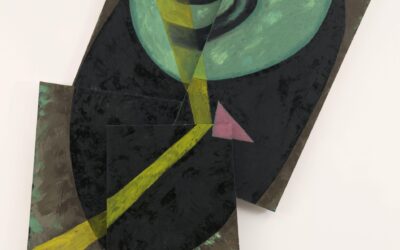Karen Horney

Moving Away From People
Karen Horney was a German psychoanalyst. Her career came into prominence in the nineteen
twenties when she formed theories on human attachment and neurosis that split from Freud’s
key ideas. Horney’s theory of personality development and individuation are still highly relevant
to modern theories of personality, attachment psychology and psychological trauma.
Horney observed that children deploy three different coping styles during the time they are
individuating from the mother. Ideally children learn mastery in the three different styles. In
imperfect situations infants become over dependent in one style and form a neurotic and rigid
personality style. This second part of a four part article will explore the moving away from
people personality style.
Horney’s three neurotic personality styles can most simply be understood as dependency
(moving towards people), Aggression (moving against people) and resignation (moving away
from people). The resigned type is the result of the developing child discovering that they are
unable to get the attention of the parent either through asking for attention or demanding it. The
child then retreats into an innerworld where it creates its own systems of psychological reward
through creativity and self expansion.
If you are a writer or a psychotherapist it is highly likely that you are strongly developed in this
area even if you are not quite a neurotic! The ability to move into your head and create your own
rules and concepts for life is a useful skill, but not one we learn from asking or demanding
attention from our parents. These personality types are more able to see through the arbitrary
nature of the rules or traditions in a society, and have less attachment to the cultural rules.
Unless these children develop ways of communicating these inner worlds they can seem
“spacey” or “lost in their thoughts”.
All of the neuroses that Horeney observes can be understood as the limiting conditions that a
person with insecure attachment has for being safe. The dependent type needs others to feel
safe, while the aggressive type needs control. A person in the “moving away from people”
neurotic type only feels safe when some inner condition of solitude or independence has been
fulfilled. This ultimate value of independence can present in several ways. Some want to be
invisible, living an unassuming and private life. Sometimes the fixation on independence
manifests and living off the land, being wealthy, and sometimes as being emotionally
independent. Patients in this style may emulate, Jay Gatsby, Jeremiah Johnson or John Wayne.
The moving away from people's personality type is not comfortable unless they are absolutely
independent in some special area. While the moving towards people type needs people in order
to function, and the moving against people personality type needs people in order to become
dominant, the moving away from people type feels unsafe if it needs people for anything
substantial. This does not mean that they are unsuccessful socially, only that they are
uncomfortable with relying on social or emotional ties to others in order to feel stable. This type
failed to maintain a connection with their mother through either dependence seeking or
aggressive behaviors. They learned to soothe themselves and learned their own coping skills.
This process of learning to regulate one's own emotions as a child without assistance leads
children into their own head where they develop a large and elaborate inner world. Children
become less interested or even aware of external realities like norms, socialplay, or practical
tasks. Instead of learning to manage their feelings they become fascinated with them. Moving
away from people personality type patients have a unique knack for encoding their beliefs,
personality and opinions into artistic creations because they crave the recognition and
understanding that was denied them by their caregivers as children. Art, humor, fashion,
business even, is a way of communicating something about the hidden self to others.
This is a 4 part article on Karen Horney’s theories. This is part 4 of 4.
Bibliography:
Horney, K. (n.d.). Moving Away From People. Paste.txt.
Further Reading:
Horney, K. (1950). Neurosis and Human Growth: The Struggle Toward Self-Realization. W. W. Norton & Company.
Horney, K. (1945). Our Inner Conflicts: A Constructive Theory of Neurosis. W. W. Norton & Company.
Horney, K. (1939). New Ways in Psychoanalysis. W. W. Norton & Company.
Horney, K. (1937). The Neurotic Personality of Our Time. W. W. Norton & Company.






















0 Comments